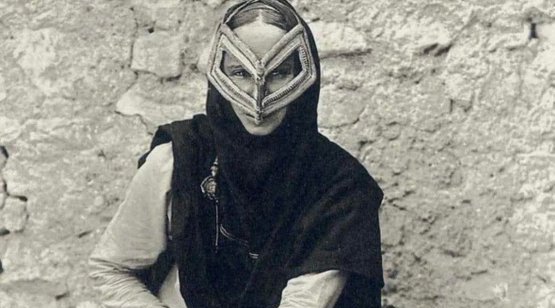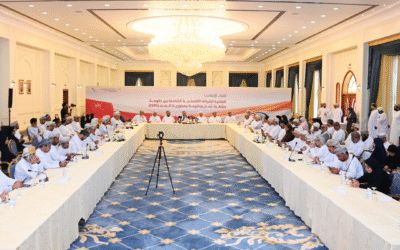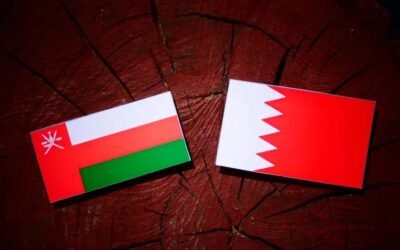Faces of the Desert: The Cultural Story Behind the Omani Burqa in 1905
Introduction: A Portrait Etched in Dust and Time
In 1905, long before Oman’s modern rebirth under Sultan Qaboos, the Sultanate was a rugged mosaic of independent tribes, ancient maritime trade routes, and deep-rooted traditions. One photograph from this era — of a Bedouin woman seated in quiet dignity, her face partially concealed by the striking burqa — opens a doorway into this hidden world.
But who was she? And what did her mask represent beyond its aesthetic form?
The Land Before Oil: Oman in 1905
In the early 20th century, Oman was not yet a unified modern state but a collection of tribal societies governed through deeply ingrained customs, often centered around kinship, oral law, and local sheikhs. The ruling Sultan, Faisal bin Turki (r. 1888–1913), maintained nominal control from Muscat, but large parts of the interior were governed autonomously by tribal alliances and the Imamate system, particularly in areas like Nizwa and the Jebel Akhdar.
- Tribal dominance: Society was organized into tribes with deep historical rivalries and alliances.
- Limited central authority: The Sultan had little influence inland; the interior was governed more by religious leaders and tribal elders.
- Maritime trade: Coastal Oman, including Muscat and Sur, thrived through Indian Ocean trade — with links to India, Zanzibar, and Persia.
- British influence: Britain had a treaty-based protectorate relationship with Muscat, largely to control trade routes and prevent other European powers from gaining influence.
The Burqa: A Mask of Identity and Modesty
The burqa — also known in the Gulf as batoola — is more than an accessory. In 1905 Oman, especially among Bedouin women, the burqa carried layered meanings:
- Modesty and protection: In harsh desert climates, it shielded the skin from sun, sand, and wind while adhering to social customs of modesty.
- Tribal identity: The shape, stitching, and material of a burqa could immediately identify a woman’s region or tribe.
- Social signal: Some patterns and materials denoted marital status or wealth. A more ornate batoola may indicate a woman of higher tribal standing.
The woman in the photo wears a classic coastal burqa — angular and symmetrical, stiffened and dark — most likely from a northern tribe such as the Bani Yas, Al Shihuh, or Bani Hina.
Women in Tribal Society
Though life was patriarchal, Bedouin women held significant roles:
- Household leaders: Women managed homes, livestock, and often finances when men traveled or herded.
- Healers and oral historians: They preserved folklore, healing practices, and tribal poetry.
- Cultural bearers: Through clothing, crafts, and jewelry, women visually communicated cultural knowledge.
The image — of a barefoot woman on a wooden crate, staring defiantly into the camera — is rare not just for its composition, but for the access it suggests. Photography of women was uncommon in tribal societies unless trust had been earned, often by traveling ethnographers or colonial recorders.
Preserving the Legacy
Today, the burqa has become a cultural emblem. Though fewer women wear it daily, it still appears during weddings, heritage festivals, and is treasured in family heirlooms and museum collections. The photograph from 1905 is more than a visual relic — it’s a declaration of timeless identity.
Conclusion: Through Her Eyes
Behind the ornate symmetry of the burqa, the eyes of the woman in the photograph speak — of desert winds, of unspoken stories, of pride in a world where identity was carved not in pixels, but in cloth, dust, and silence.
Photo Caption for Instagram
A Bedouin woman in Oman, circa 1905. Wearing the traditional burqa — a cultural marker of modesty and identity — she sits quietly before a stone wall, capturing in her gaze the endurance of a people whose stories were written on the sands of time.
📸 Source: © Historical Photos
Sources and References
- Wilkinson, John C. The Imamate Tradition of Oman. Cambridge University Press, 1987.
- Jones, Jeremy & Ridout, Nicholas. A History of Modern Oman. Cambridge University Press, 2015.
- Lloyd, Myfanwy. “Omani Women’s Dress.” Aramco World, 1999.
- Gulf Studies Center. “Costume and Identity in Gulf Women’s Dress.” Doha, Qatar University Archives.
- Bailey, Clinton. Bedouin Culture in the Bible. Yale University Press, 2010.
- Thesiger, Wilfred. Arabian Sands. Penguin Classics, 1959.
- National Museum of Oman – Exhibitions on Traditional Dress and Women’s Identity.
- British Library Archives – Records on British-Omani treaties and social structure in early 20th-century Muscat and interior Oman.
Hassan Al Maqbali
Content Creator & Website Manager at Omanspire
Hassan Al Maqbali is a dedicated content creator and the website manager at Omanspire, where he writes passionately about Oman's culture, history, and the timeless stories that shape the nation’s identity. His work reflects a deep love for the Sultanate and a commitment to sharing its beauty with the world.
Driven by a desire to widen global understanding of Oman, Hassan creates narratives that present the country through diverse perspectives—capturing its people, heritage, landscapes, and evolving cultural heartbeat. Through Omanspire, he hopes to bring readers closer to the spirit of Oman, one story at a time.




